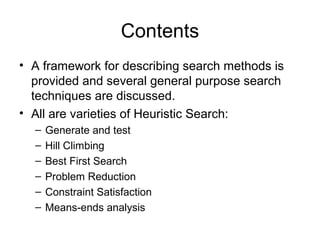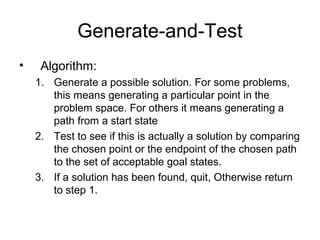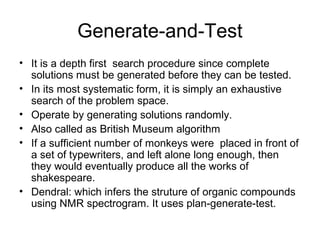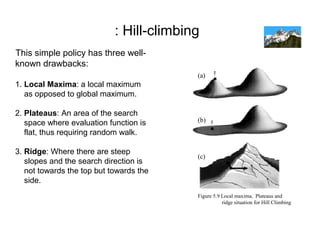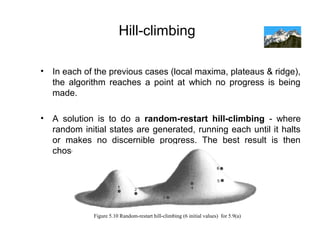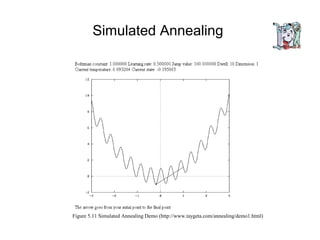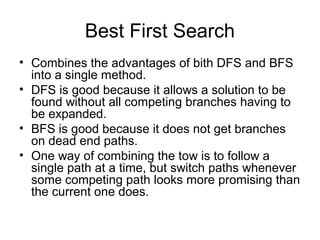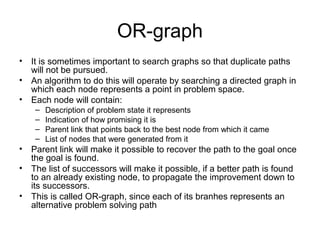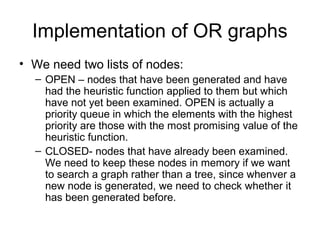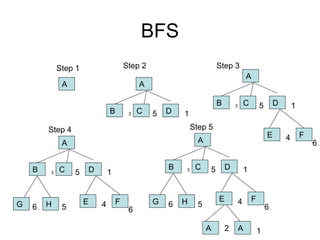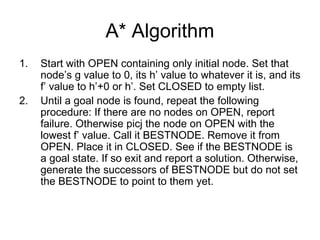The document discusses various heuristic search techniques, explaining methods like generate and test, hill climbing, best first search, and the A* algorithm. It outlines the advantages and drawbacks of each method, highlighting approaches to overcome common issues such as local maxima and plateaus. Additionally, it reviews concepts like or-graphs and and-or graphs for effective problem-solving in search-related contexts.

